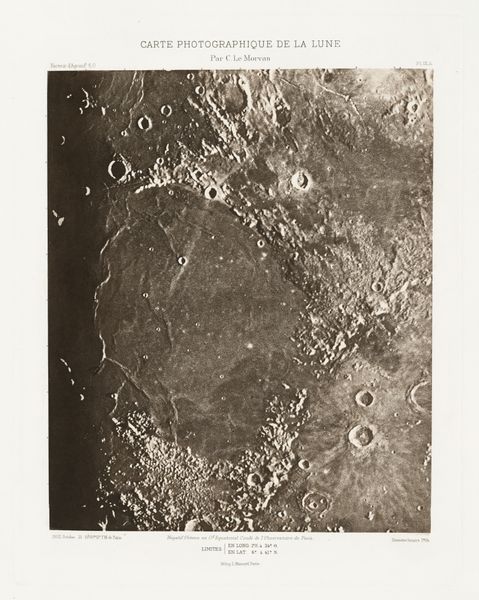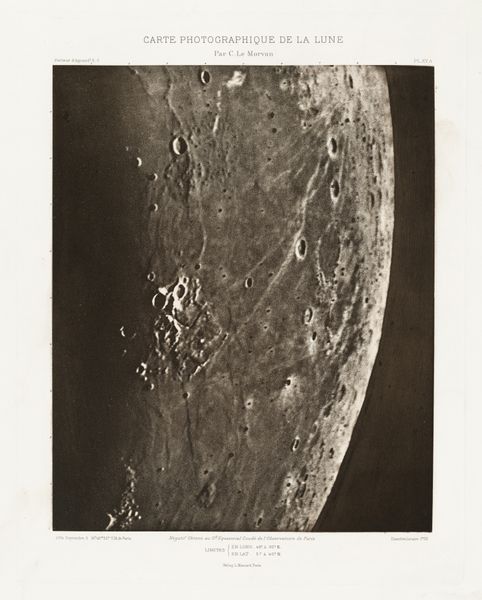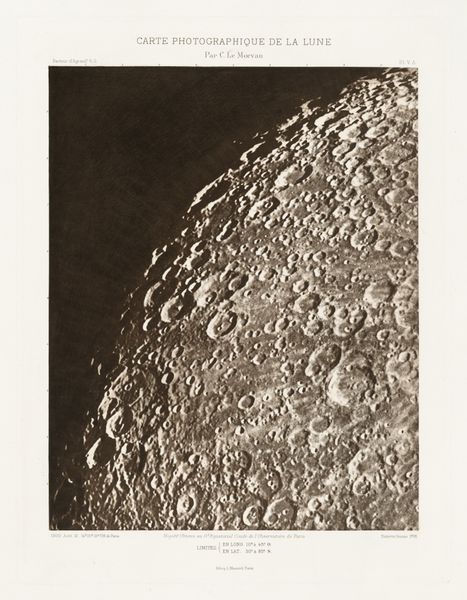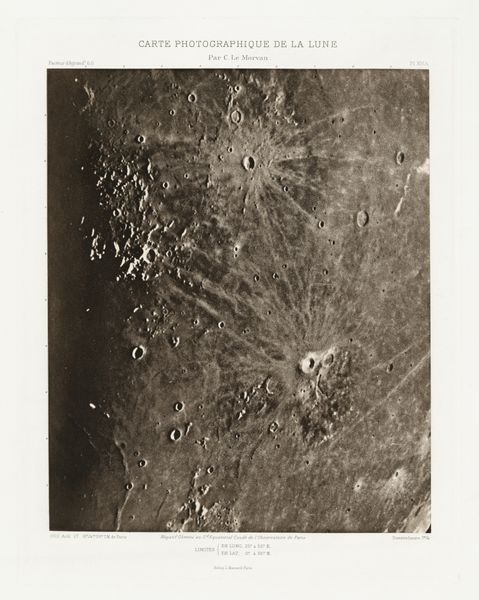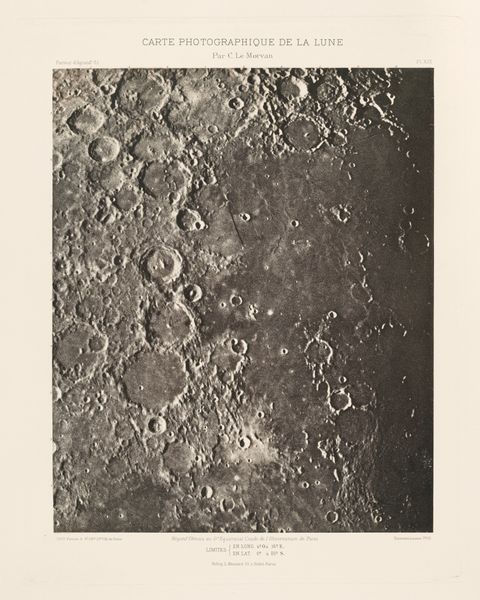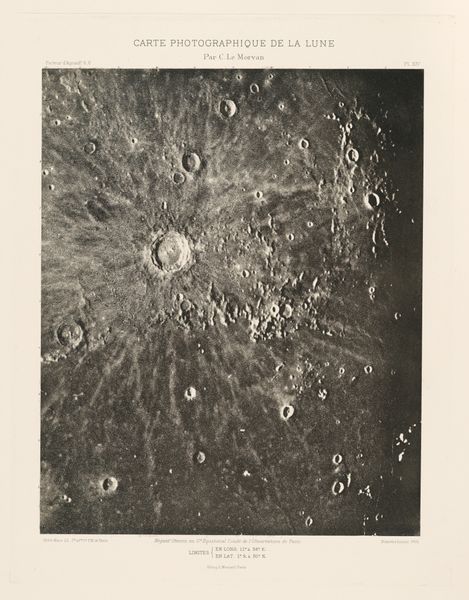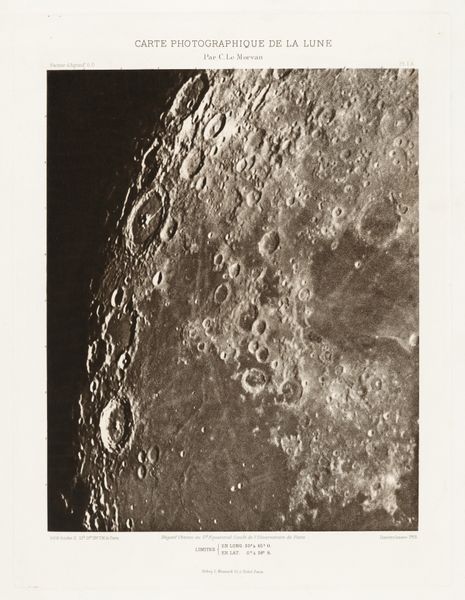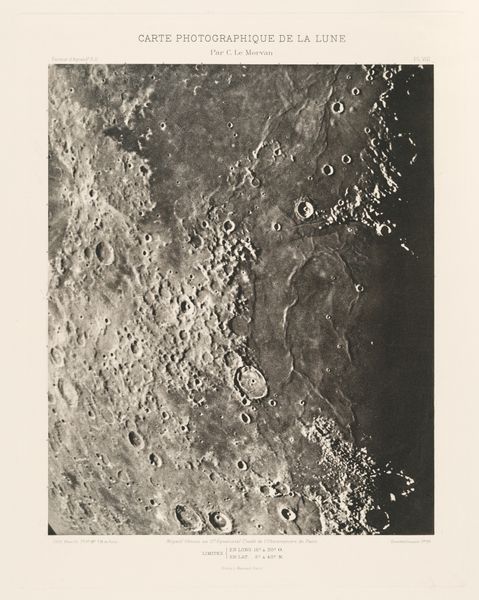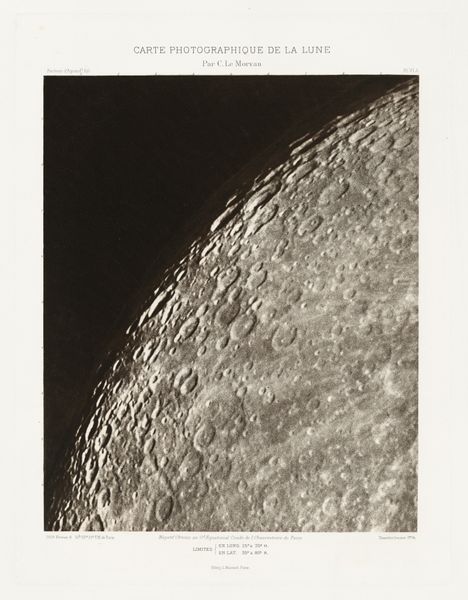
Carte photographique de la lune, planche XVIII.A (Photographic Chart of the Moon, plate XVIII.A) Possibly 1905 - 1914
0:00
0:00
print, photography
# print
#
landscape
#
photography
Dimensions: image: 31.1 × 25.5 cm (12 1/4 × 10 1/16 in.) plate: 38.9 × 29.5 cm (15 5/16 × 11 5/8 in.) sheet: 49 × 37.9 cm (19 5/16 × 14 15/16 in.)
Copyright: National Gallery of Art: CC0 1.0
Editor: This is "Carte photographique de la lune, planche XVIII.A" or "Photographic Chart of the Moon, plate XVIII.A" by Charles Le Morvan, made sometime between 1905 and 1914. It's a black and white photographic print. It really captures the stark desolation of the lunar landscape, I think. How do you interpret this work, particularly its scientific and artistic context? Curator: Well, the obvious first interpretation is about the moon as an object of scientific study. But let's push a bit harder. Consider this was created at a time when photography itself was vying for recognition as a legitimate art form. Le Morvan, working in a scientific context, inadvertently contributes to this dialogue. Is he documenting the moon or offering a perspective on it? Editor: That’s interesting. So, you’re saying that by using photography for scientific purposes, he’s also making a statement about the potential of the medium itself? Like, could the "objective" eye also be artistic? Curator: Precisely! Think about the socio-political implications. Space, exploration, scientific progress - all these concepts were heavily charged with nationalistic ambition at the turn of the century. To create an exact representation of the moon gives some power over the representation and hence potential appropriation, to those with means to create it. Who gets to look, who gets to interpret, who gets to possess this new frontier? Editor: That makes me wonder about access. How readily available would prints like these have been to the general public? Was it more about solidifying scientific authority than widespread education? Curator: Exactly. Consider how this kind of image reinforces the power dynamic of the expert gaze. Also, do you notice the limited tones of the print? Does it look lifeless and sterile, or something else? The "flatness" of the print as a symbol, potentially, of limited understanding, or lack of acknowledgement, or perhaps an intentional undervaluing of the work that was undertaken at the time. Editor: I never would have considered those things, looking at a photo of the moon! Thanks for providing a deeper understanding of this piece. Curator: Absolutely! Examining art within its multifaceted historical and social framework allows for richer, and, arguably, more rewarding conversations about what art truly signifies.
Comments
No comments
Be the first to comment and join the conversation on the ultimate creative platform.

